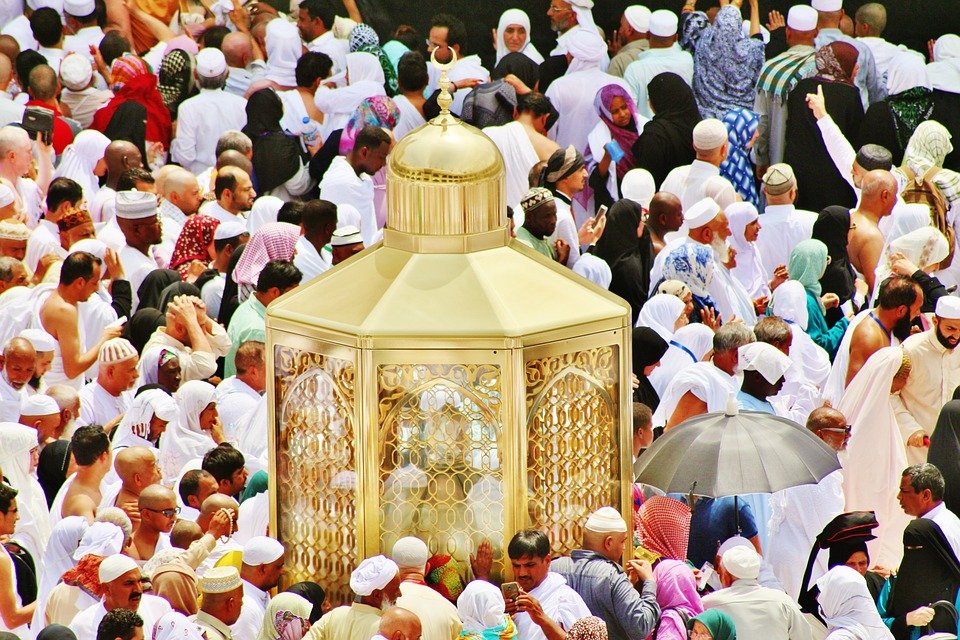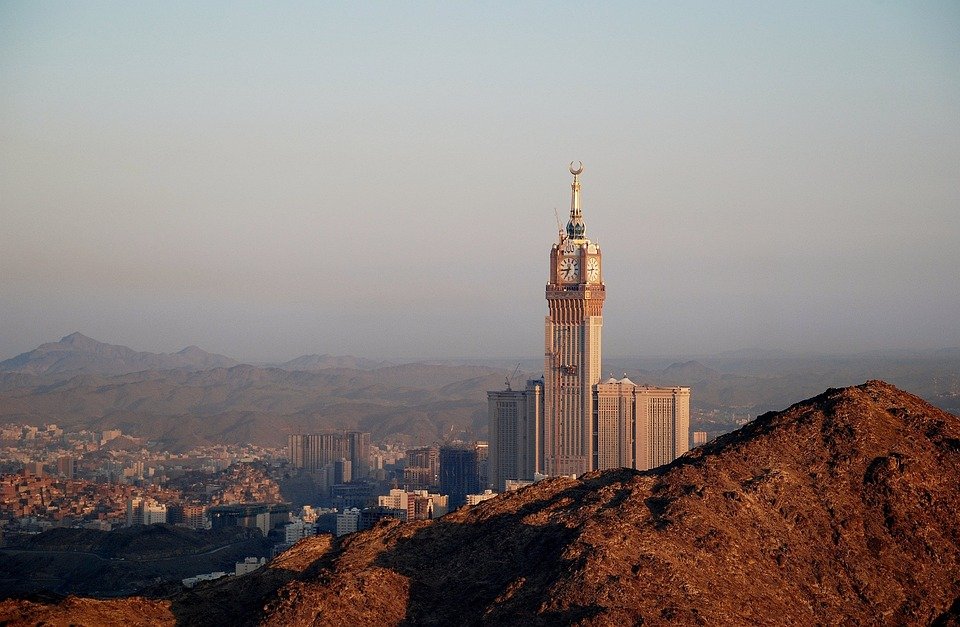You are here to read: How Many People Go for Hajj? Exploring the Pilgrimage Numbers – A Thoughtfully Written Guide Offering Spiritual Wisdom and Travel Advice for Every Pilgrim who is going on holy journey of Hajj or Umrah.
Hajj is one of the most significant events in the Islamic calendar, attracting millions of Muslims from around the globe each year. In 2022, approximately 1.8 million pilgrims performed Hajj, demonstrating the enduring commitment of the Muslim community to this sacred pilgrimage. If you are curious about how many people go for Hajj and want to understand more about the numbers behind this impactful event, you’ve come to the right place. In this article, I promise to provide a comprehensive guide that will answer all your questions about how many people go for Hajj, ensuring you gain a clear perspective on this important topic.
Understanding how many people go for Hajj is crucial, as it highlights the significance of unity, faith, and spirituality among Muslims worldwide. In my opinion, this pilgrimage is not just a physical journey but a profound spiritual experience that strengthens the bonds within the Islamic community. With over nine years of expertise in the Umrah and Makkah travel field since 2016 at Airlinkhajjandumrah.com, we are dedicated to providing you with accurate and up-to-date information. Join me as we explore how many people go for Hajj and the implications of these numbers on the Muslim community globally.
Understanding Hajj and Its Significance
Hajj is an extraordinary pilgrimage that millions of Muslims undertake every year. It takes place in the holy city of Makkah, Saudi Arabia. This journey is one of the Five Pillars of Islam, emphasizing its importance in the faith. Every capable Muslim must perform Hajj at least once in their lifetime, provided they are physically and financially able. This spiritual pilgrimage strengthens a Muslim’s faith and brings everyone closer together in a shared experience.
During Hajj, activities and rituals reflect deep devotion and connection to Islamic traditions. From standing at the Plain of Arafat to circling the Kaaba, worshippers express their submission to Allah. Each action symbolizes unity, humility, and forgiveness. It’s a time for self-reflection and spiritual growth, making the pilgrimage a powerful experience for participants.
Statistics of Hajj Participation Over the Years
The number of people who go for Hajj fluctuates annually. In recent years, the count has soared to nearly two million participants each season. This remarkable figure represents Muslims from diverse cultures, backgrounds, and nationalities. The experience becomes even more enriching as people come together, forming a tapestry of unity and faith.
However, numbers can change due to various factors. Natural events, health crises, and government regulations may influence participation. For instance, during the COVID-19 pandemic, attendance became significantly limited to ensure safety. Despite such challenges, the spirit of the pilgrimage remained strong among those who sought to fulfill their religious duty.
The Role of Tour Operators in Hajj
Many aspiring pilgrims turn to tour operators to assist in their preparations for the journey. While we don’t directly offer Hajj services, we maintain close connections with reputable tour operators. They facilitate bookings, accommodations, and transportation, ensuring a smooth experience for travelers.
You're at the middle of this awesome post at AirlinkHajjandUmrah.com through: How Many People Go for Hajj? Exploring the Pilgrimage Numbers. Keep reading, it gets better!
These professionals play a critical role in simplifying the logistics. They understand the importance of the journey and work diligently to meet all our needs. By coordinating group travels, these operators help foster a sense of community and shared experience among participants, making the pilgrimage even more meaningful.
Religious Diversity and Global Participation
Hajj draws Muslims from around the world, creating a vibrant and diverse atmosphere in Makkah. Every year, countries like Indonesia, Pakistan, and India contribute significantly to pilgrimage numbers. This mixture of cultures enriches the experience, as people share rituals, stories, and moments of devotion.
Each participant carries their unique perspectives and traditions. This tapestry of faith fosters an atmosphere of respect and understanding. I find it impressive to see how, despite our diverse backgrounds, we unite in our faith and purpose, embodying the spirit of brotherhood and sisterhood that Islam promotes.
Challenges During the Pilgrimage
While Hajj is a beautiful experience, it does come with its challenges. The sheer volume of pilgrims can create difficulties in managing logistics. For instance, finding a quiet moment for prayer can be tough amidst the crowds. However, these challenges can often enhance the experience, fostering a sense of patience and resilience.
Moreover, the physical demands can be intense. Pilgrims may find themselves exhausted as they undertake various rituals. These hardships often serve as tests of faith, ultimately allowing participants to appreciate the essence of humility and determination. I believe that overcoming these obstacles can lead to profound spiritual revelations.
The Evolution of Hajj Numbers Over Time
Historically, the number of attendees for Hajj has evolved significantly. In the early days of Islam, only a small group of believers partook in the pilgrimage. As the religion spread, more and more people embraced the call to Hajj. Over the decades, improved transportation and communication technologies facilitated this growth, allowing pilgrims to travel greater distances.
The advent of air travel especially revolutionized the pilgrimage experience. It has enabled millions to fulfill their religious obligations without the lengthy journeys that earlier generations faced. I think this ease of access has contributed to the increased numbers, allowing people from all walks of life to participate in this monumental occasion.
The Future of Hajj Participation
Looking ahead, the future of Hajj attendance remains a topic of interest. Institutions and governments continue to assess how to accommodate the growing numbers while ensuring safety and comfort. Plans and innovations may arise to enhance the experience for future generations of pilgrims.
Given the significance of Hajj, I feel it’s crucial to strive for improvements that will maintain its spiritual essence. Balancing the influx of pilgrims with the need for reflection and devotion is essential. As more people express their desire to go for Hajj, I believe that the bond fostered through this experience will continue to thrive, inspiring future generations to embrace their faith wholeheartedly.
That wraps up How Many People Go for Hajj? Exploring the Pilgrimage Numbers. Thanks for sticking with us till here! Share this: How Many People Go for Hajj? Exploring the Pilgrimage Numbers with your friends.
Check our homepage at Air Link Hajj & Umrah for more awesome updates.
Some interesting posts are: 1: Umrah Mubarak, 2: When is Umrah closed 2026?, 3: When does Umrah start after Hajj 2026?
Mushu, an experienced Saudi Arabia traveler and writer, shares insightful tips and spiritual reflections to enhance Hajj and Umrah journeys for fellow pilgrims. He has been to Makkah and Madina from 2016 to 2023 many times and his posts will reflect this.







